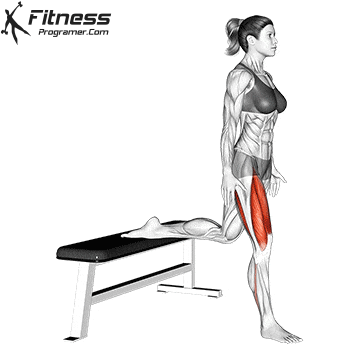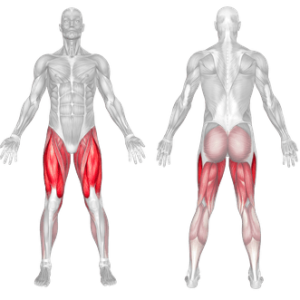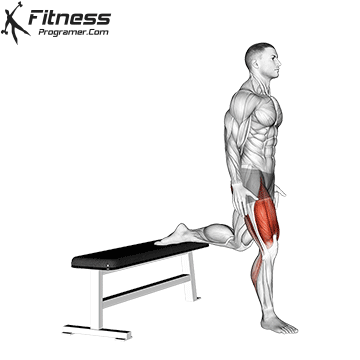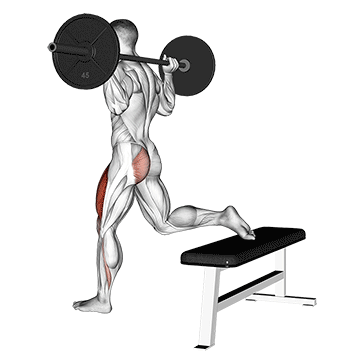Overview
The bodyweight Bulgarian split squat is a unilateral exercise that enhances lower-body strength, balance, and mobility. It isolates each leg individually, helping to correct muscle imbalances while engaging stabilizing muscles. This exercise is particularly beneficial for athletes, runners, and individuals looking to improve lower-body function without added weights.
How to Perform the Bodyweight Bulgarian Split Squat

Step 1: Setup and Positioning
-
Stand about two feet in front of a bench or sturdy platform.
-
Extend your rear foot back and place the top of your foot on the bench.
-
Keep your chest upright and core engaged.
Step 2: Execution
-
Lower your back knee toward the ground by bending your front knee.
-
Descend until your front thigh is parallel to the floor or slightly below.
-
Press through your front heel to return to the starting position.
-
Repeat for the desired reps before switching legs.
Tips for Proper Form
-
Keep your front knee aligned with your toes to avoid excess strain.
-
Maintain an upright torso to prevent excessive forward lean.
-
Engage your core and glutes for better stability.
-
Control the movement to prevent bouncing or losing balance.
-
Adjust your stance so your front leg does most of the work.
Common Mistakes to Avoid
-
Placing the back foot too high, which can cause discomfort in the knee.
-
Leaning too far forward, reducing glute activation.
-
Allowing the front knee to collapse inward, increasing injury risk.
-
Relying on the back leg, instead of driving through the front foot.
-
Moving too quickly, which reduces muscle engagement.
Benefits of the Bodyweight Bulgarian Split Squat
-
Increases Lower-Body Strength: Targets the quadriceps, glutes, and hamstrings without needing additional weights.
-
Improves Balance and Stability: The unilateral nature of the exercise enhances core strength and coordination.
-
Enhances Flexibility and Mobility: Increases hip and ankle mobility, helping with overall movement efficiency.
-
Reduces Muscle Imbalances: Strengthens each leg individually, correcting asymmetries.
-
Accessible and Versatile: Can be performed anywhere, making it great for home workouts.
How to Incorporate Into Your Routine
-
For Strength: Perform 3 to 4 sets of 8 to 12 reps per leg.
-
For Endurance and Stability: Perform 3 sets of 12 to 20 reps per leg.
-
Pair With: Step-ups, lunges, and traditional squats for a complete lower-body routine.
Muscles Worked




